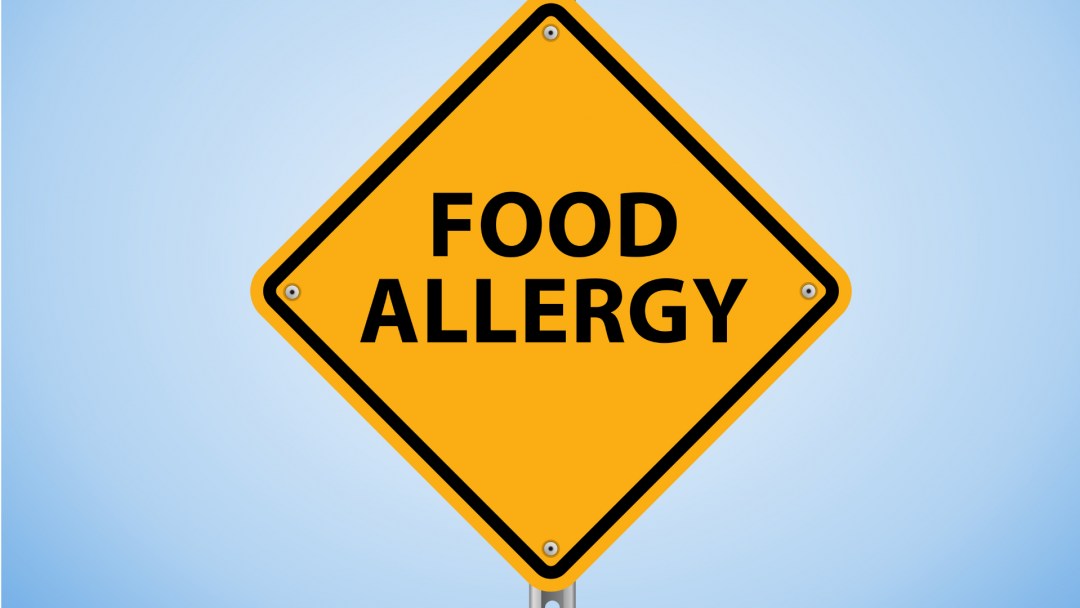Living With Food Allergies as a University Student

Written by Program Assistant Mythili Thatparananthan
I was sitting in class watching my peers’ final presentations when I felt my face get hot and itchy. I ignored it, thinking that it was probably nothing, and that it would go away on its own. I tried shifting my focus to the presentation, but I could only focus on the irritating bumpiness around my mouth and chin. The chocolate croissant I ate at the MUSC Tim Hortons earlier that day was at the back of my mind. Seeing that my face was looking very flushed, my friend asked me if I was feeling okay. I said “I think I’m having an allergic reaction, and I don’t know what to do”.
Luckily for me, when I told my instructor what was happening, she was incredibly understanding and suggested that I go to the Student Wellness Centre right away. By doing so, I was able to speak with a doctor about my allergic reaction and was given Benadryl (an allergy relief medication). I also learned that my reaction was likely due the chocolate croissant I ate earlier in the day.
As I have a nut allergy, it was likely that the chocolate croissant came into contact with nuts, thus causing my reaction. Unfortunately, Tim Hortons food products are known to have a risk of allergen cross contamination in the manufacturing process, or while the product is made or displayed. While I was able to get treatment for my reaction very quickly, I found the experience to be scary and uncomfortable.
Navigating food allergies as a university student is challenging, especially when trying to find safe food options on campus. If you have food allergies, it is important to know the types of reactions that can occur, and how to manage them safely.
How Do Allergic Reactions Occur?
The immune system is the body’s defense control center. When you eat, touch, or inhale an allergen, your immune system labels it as an invader. To fight against it, the immune system makes copies of an antibody that bind to the allergens. This binding causes cells to release chemicals that cause symptoms of an allergic reaction (e.g., hives, itchiness, redness).
What is Anaphylaxis?
Anaphylaxis is a life-threatening allergic reaction that can happen within minutes of being exposed to an allergen. It occurs when the immune system releases a flood of chemicals, causing the body to go into shock. Symptoms of anaphylaxis include:
- Skin reactions: hives, itching, flushed or pale skin
- Low blood pressure
- Constriction of the airways and a swollen tongue or throat, which can cause wheezing and trouble breathing
- A weak and rapid pulse
- Nausea, vomiting or diarrhea
- Dizziness or fainting
If you are experiencing anaphylaxis, you need an injection of epinephrine, commonly known as an Epi-Pen, and a follow-up trip to an emergency room. If you do not have an Epi-Pen, you need to go to an emergency room immediately. It is critical that anaphylaxis is treated immediately, or it can be fatal.
Tips for Managing Allergies as a University Student
- Always carry your Epi-Pen, and allergy relief medications.
- It is extremely important to always keep your Epi-Pen on you. It is also a good idea to carry allergy relief medications, such as Benadryl, if you experience milder reactions.
- Do your research when dining out.
- Before choosing a restaurant, do some research online or call ahead to find out if they can accommodate your allergies. Look for places that have allergy-friendly options or can modify dishes to suit your needs.
- It is also helpful to look at the menus of food places beforehand, so that you know what items would be safe for you to eat.
- Ask before you order.
- When dining out, be sure to inform the waitstaff about your allergies prior to ordering. Don’t hesitate to ask the server or chef about ingredients, preparation methods, or concerns about cross-contamination.
- Some restaurants have allergy-friendly menus or can make substitutions to accommodate your allergies. Ask if they can provide you with a customized dish or suggest alternatives.
- Learn to advocate for yourself.
- Advocating for yourself when you have allergies while dining out with friends is crucial for your health and safety. Let your friends know about your allergies in advance so they can consider your dietary restrictions when selecting a restaurant. This will avoid any last-minute surprises or difficulties.
- Take safety precautions if you use a shared kitchen.
- If you use a shared kitchen, it is important to inform your roommates about your food allergies as soon as you move in together. Be clear about the specific allergens you need to avoid and the severity of your allergies.
- Take the time to educate your roommates about your allergies and the potential consequences of exposure. Make sure they understand the importance of avoiding cross-contact and how to read food labels.
- Clearly label your food, and if possible, designate specific shelves, drawers, or areas in the kitchen for your allergy-safe food. This reduces the risk of cross-contamination.
- Establish ground rules for the kitchen with your roommate. Examples of rules are: no sharing of utensils, cutting boards, or containers, and no cooking with your allergens in the shared spaces. Make sure everyone understands and agrees to these rules.
Resources
- A non-profit organization dedicated to helping Canadians with food allergies live with confidence through webinars, events, and online resources.
- They have tools and resources specific to post-secondary institutions here.
Sources
- https://www.niaid.nih.gov/diseases-conditions/food-allergy-causes-prevention#:~:text=A%20food%20allergy%20develops%20when,cells%20in%20the%20immune%20system.
- https://www.mayoclinic.org/diseases-conditions/anaphylaxis/symptoms-causes/syc-20351468
- https://hospitality.mcmaster.ca/wellness-sustainability/nutrition-and-dietary-restrictions/allergies-and-dietary-accommodations/#:~:text=McMaster%20University%20Hospitality%20Services%20makes,the%20severity%20of%20food%20allergies
